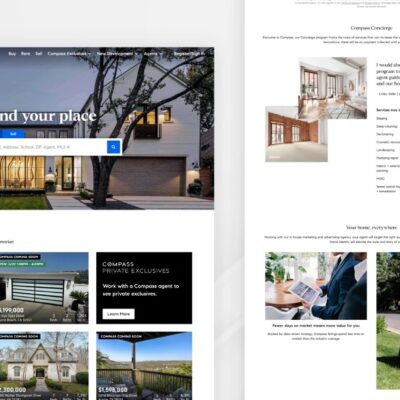In today’s fast-paced digital world, your website isn’t just a tool—it’s a silent salesperson working 24/7. But what most businesses don’t realize is that users don’t read websites. They scan, feel, and subconsciously judge within milliseconds. This is why modern web design services have evolved. They’re no longer just about color palettes and layouts—they’re built to trigger human behavior, tap into emotions, and convert visitors into customers using the science of the brain.
This fusion of psychology, design, and digital strategy is known as neuromarketing design—and it’s driving some of the most successful websites on the internet.
The Psychology Behind First Clicks
Did you know that it takes only 50 milliseconds for a user to form an opinion about your website? That’s faster than a blink. Within that moment, their brain makes judgments on trustworthiness, professionalism, and relevance—all before they read a single word.
This means your web design must instantly communicate three things:
Who you are
What you offer
Why they should trust you
That’s where behavioral-focused web design services come into play. They understand these rapid, instinctive user behaviors and design interfaces that feel “right” at a subconscious level.
What Makes a Brain-Friendly Website?
Let’s break down the core design techniques that web professionals use to guide users toward action, based on how the brain works:
1. The F-Pattern Layout
Eye-tracking studies show that users scan websites in an “F” shape. They focus on the top, then the left side, then slightly across. Smart designers place important elements like headlines, call-to-actions, and navigation bars along this natural visual path to maximize impact.
2. Color Psychology
Colors are more than decoration—they’re emotional triggers. For example:
Blue: Trust, calm, professionalism (used by banks and tech firms)
Red: Urgency, energy, power (used in clearance sales or fast food)
Green: Growth, health, success (great for eco or finance brands)
Black: Luxury, sophistication (used by premium and fashion brands)
Top web design services don’t guess colors—they choose them to match your brand’s voice and psychological goals.
3. Visual Hierarchy
The brain craves order. By adjusting the size, color, and placement of text and images, designers control what the user sees first. This hierarchy directs the user’s attention to the most important parts of your page—like pricing, product benefits, or signup buttons.
4. Hick’s Law
The more choices you offer, the longer it takes to make a decision. A well-designed site keeps things simple. Instead of overwhelming users with 10 navigation options, the site might feature just 3 or 4 clear, high-value actions. This increases conversions and improves clarity.
5. Cognitive Fluency
Websites that feel familiar, intuitive, and easy to use perform better. That’s because the brain loves patterns. Using recognizable design elements like hamburger menus, sticky headers, and consistent iconography builds comfort and trust.
From Click to Conversion: A Journey Through Brain Design
Let’s walk through a typical brain-based user journey on a well-designed website:
User lands on the homepage:
In less than a second, the visual appeal and headline tell them they’re in the right place.
They scroll slightly:
The layout guides their eyes, revealing value propositions, social proof, and emotional benefits.
They find a CTA (“Book Now,” “Get a Free Trial,” etc.):
Because the page feels simple and clear, they trust the action and click.
Every step of that journey is engineered—not by luck, but by a deep understanding of how users think and feel online.
Case Studies: Brainy Design in Action
Dropbox:
Their homepage uses a clean design with lots of white space, a calming blue palette, and one clear call to action. Result? A conversion rate that far exceeds industry averages.
Airbnb:
Their design incorporates personalized images, emotional messaging (“Belong Anywhere”), and intuitive search functions. It speaks to desires, not just logic.
Mailchimp:
Known for using humor and emotion in its illustrations and microcopy, Mailchimp connects with users emotionally while providing a seamless user journey.
All of these sites succeed because their web design services are rooted in behavioral science—not just artistic trends.
Mobile Optimization: Your Brain On the Go
Over 60% of web traffic now comes from mobile devices. And here’s the twist: user patience is lower on mobile. If your site isn’t responsive, fast, and brain-friendly on smaller screens, you’re losing half your audience.
Professional design services prioritize:
Thumb-friendly CTA buttons
Fast page load times
Clean, collapsible menus
Vertical storytelling structure
They design mobile-first—not just mobile-friendly.
SEO Meets Psychology
Design isn’t just for users—it’s for Google too. Sites that engage users lower bounce rates, which search engines love. That means your brain-based design helps your SEO rankings and gets you more organic traffic—naturally.
Features that contribute to both psychology and SEO include:
Proper use of headings (H1, H2)
Image alt text
Clean code
Internal linking
Readable fonts and contrast
Your Website’s True Goal: Memory + Emotion
At the end of the day, visitors won’t remember everything on your site—but they’ll remember how it made them feel. Did it feel trustworthy? Easy to use? Smart? If so, they’ll come back—or better yet, convert on the spot.
Emotion is the glue that makes experiences stick. Your website isn’t just a design—it’s a feeling.
Conclusion: Design for the Brain, Win the Market
If your website isn’t designed with the brain in mind, you’re at a disadvantage. Users are emotional, impatient, and overloaded with information. They want to feel something the second they land on your site.
That’s why investing in high-level web design services is not just about appearance—it’s about performance, conversion, and growth.
Don’t just design to impress—design to convert. Design to connect. Design for the brain.
To amplify the emotional power of your online presence, your visual branding must be unforgettable. A great logo anchors your identity and creates instant recognition. That’s why smart brands turn to the best logo design company to craft logos that work across web, print, and memory. When your logo and web design align, your brand becomes unstoppable.



